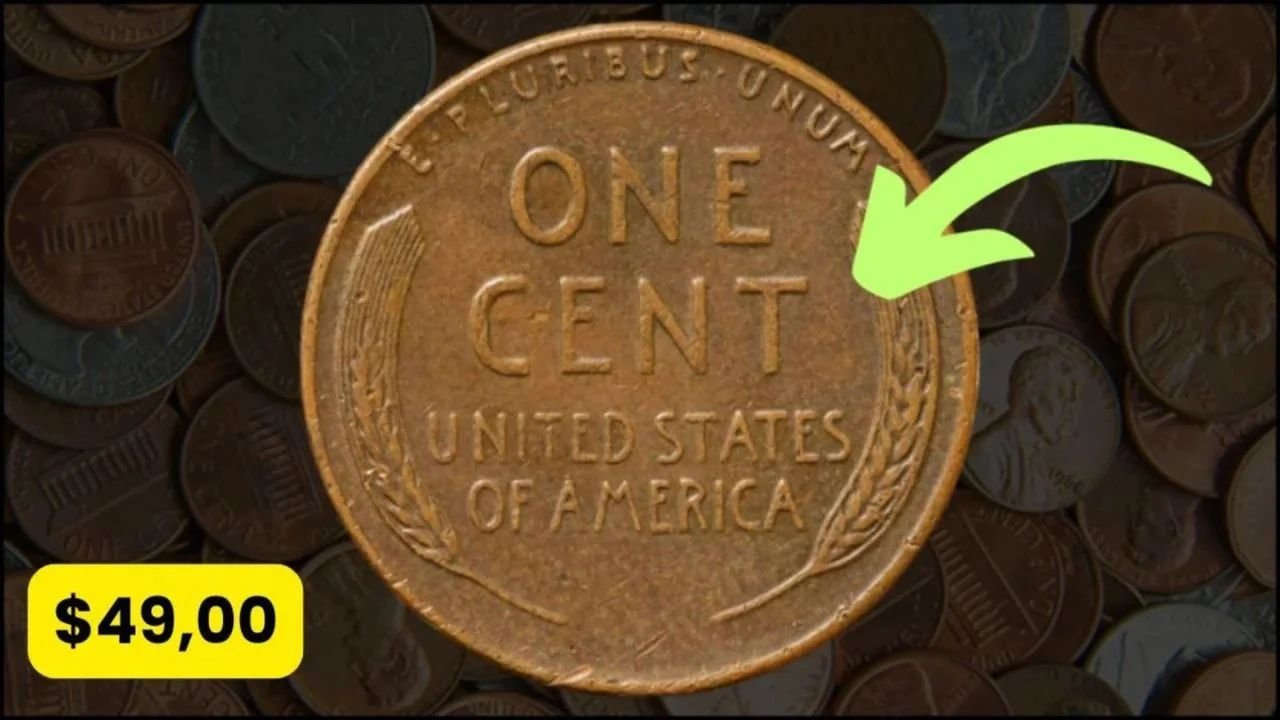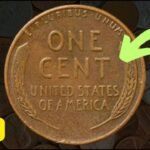The Lincoln Wheat Penny is one of the most iconic and historically significant coins in American history. Introduced in 1909 to commemorate the 100th birthday of President Abraham Lincoln, the coin features Lincoln’s portrait on the obverse side and two wheat stalks on the reverse. While it was once an ordinary part of everyday transactions, over the decades, some rare editions of this penny have become highly sought-after by collectors, with values reaching tens of thousands of dollars.
This article explores why the Lincoln Wheat Penny has captured the fascination of collectors and historians alike, what makes certain pennies extremely valuable, and how you can determine if you might own one of these rare treasures.
The Origin of the Lincoln Wheat Penny
The Lincoln Wheat Penny was introduced by the United States Mint in 1909. It replaced the Indian Head penny, marking a significant shift in American coinage design. The obverse features a finely detailed portrait of Abraham Lincoln, sculpted by Victor David Brenner, who also included his initials discreetly at the bottom of the coin. The reverse design, with its twin wheat stalks, symbolizes America’s agricultural heritage and was a fitting tribute during a time when the U.S. was heavily reliant on farming.
Over its nearly fifty-year production run from 1909 to 1958, millions of Lincoln Wheat Pennies circulated in everyday commerce. Most were ordinary and spent, but as time passed, certain coins with low mintages, unique features, or minting errors began to stand out in value.
What Makes the Lincoln Wheat Penny Special
Not every Lincoln Wheat Penny carries high value, but several key factors make certain pennies extraordinary:
- Rarity: Coins minted in low quantities or with limited releases naturally hold higher collector value.
- Mint Errors: Mistakes during the minting process, such as double dies, wrong metals, or misaligned designs, dramatically increase a penny’s worth.
- Condition: Uncirculated or well-preserved pennies without scratches or wear are significantly more valuable than worn coins.
- Historical Significance: Certain years, especially the first edition from 1909, or coins associated with significant events, carry added historical importance.
For example, the 1943 copper Lincoln Wheat Penny is exceptionally rare because most pennies minted that year were made of steel due to wartime metal shortages. This rare penny is valued at approximately $49,000 today, making it a dream find for collectors.
Circulation and Hidden Treasures
One of the most fascinating aspects of the Lincoln Wheat Penny is that some of these valuable coins are still in circulation. Yes, you might have a rare Lincoln Wheat Penny lying unnoticed in your change jar, pocket, or desk drawer. While the likelihood of finding a high-value coin is small, it is not impossible.
Many people never examine the dates or details of the pennies they receive, leaving opportunities for hidden treasures to go unnoticed. Coin collectors and enthusiasts often check old jars of coins or rolls from banks in hopes of discovering these rare gems. The excitement of potentially stumbling upon a $49,000 penny keeps the thrill of coin collecting alive.
Also Read – Why the New Yamaha R15 V5 is Winning Hearts of Riders in India
Factors That Determine the Value of a Lincoln Wheat Penny
Several critical factors determine how much a Lincoln Wheat Penny is worth:
- Year of Minting: Certain years, especially early issues like 1909 or rare mints such as 1914-D, are highly valued.
- Mint Mark: Coins minted in specific locations—Philadelphia (no mark), Denver (D), or San Francisco (S)—may have different values due to varying production numbers.
- Condition: Coins in mint or near-mint condition, with minimal wear and scratches, are significantly more valuable.
- Design Errors: Mis-struck coins, double dies, or unusual materials, like the 1943 copper penny, fetch enormous sums in the collectors’ market.
Collectors often store these pennies in protective cases to preserve their value and ensure the coin remains in pristine condition.
Historical Significance of the Lincoln Wheat Penny
The Lincoln Wheat Penny is more than just a coin—it is a piece of American history. The portrait of Abraham Lincoln honors his legacy and leadership during one of the most challenging periods in the United States. Meanwhile, the wheat stalks on the reverse symbolize the country’s agrarian roots and the importance of farming in early 20th-century America.
Collectors often value the Lincoln Wheat Penny not only for its monetary worth but also for its story and historical symbolism. Owning one is like holding a tangible piece of the nation’s past.
The Market for Rare Lincoln Wheat Pennies
The market for rare coins like the Lincoln Wheat Penny has grown steadily over the years. Collectors, investors, and history enthusiasts actively seek coins that may appreciate in value. Auctions often showcase rare Lincoln Wheat Pennies, where bidding can reach tens of thousands of dollars.
For example, a 1909-S VDB Lincoln Wheat Penny, the first edition with the designer’s initials, can sell for $1,000 to $30,000 depending on condition. Similarly, the 1914-D, with a low mintage, ranges from $2,000 to $15,000. Even pennies from the 1950s, like the 1955 double die, can fetch $1,500 to $15,000.
The Lincoln Wheat Penny valued at $49,000 demonstrates how rarity, historical significance, and condition combine to create a coin worth far more than its face value.
How to Check If You Own a Valuable Lincoln Wheat Penny
Many people wonder if they might possess a rare Lincoln Wheat Penny. Here’s how to check:
- Inspect the Year: Focus on pennies minted from 1909 to 1958 with the wheat design on the back.
- Look for Mint Marks: Check for “D” (Denver) or “S” (San Francisco) to identify rare mint locations.
- Examine the Condition: Coins with minimal wear or unique features like doubling are more valuable.
- Consult Experts: If you suspect a coin is rare, take it to a reputable coin dealer or professional numismatist for valuation.
Table of Rare Lincoln Wheat Penny Examples
| Year | Special Feature | Estimated Value |
|---|---|---|
| 1909-S VDB | First edition with designer’s initials | $1,000–$30,000 |
| 1914-D | Low mintage | $2,000–$15,000 |
| 1943 Copper | Mistakenly struck in copper instead of steel | Up to $49,000 |
| 1955 Double Die | Visible doubling on date and letters | $1,500–$15,000 |
FAQs About Lincoln Wheat Pennies
Q1: Is the Lincoln Wheat Penny still in circulation?
Yes, although rare, some Lincoln Wheat Pennies still appear in everyday change.
Q2: Why is one penny worth $49,000?
Due to rare minting errors and limited numbers, certain pennies like the 1943 copper issue command extraordinary prices.
Q3: How do I know if my penny is valuable?
Check the year, mint mark, and condition. Consult a coin dealer or numismatics expert for professional evaluation.
Q4: Which years should I focus on?
Pennies from 1909 to 1958 with the wheat design on the reverse are the key years to examine for potential value.
Conclusion
The Lincoln Wheat Penny may appear to be an ordinary coin at first glance, but for collectors, it represents a treasure trove of history, rarity, and potential financial value. Coins like the 1943 copper edition, valued at $49,000, demonstrate how something so small can become extraordinary.
Whether you are a seasoned coin collector or a casual observer, keeping an eye on old pennies, particularly those with the wheat design, can uncover hidden gems. Next time you sift through your change jar or examine coins inherited from family members, remember: the Lincoln Wheat Penny could be more than just spare change—it could be a piece of history waiting to be discovered.
Some Important Link
| Download News APP | Click Here |
| WhatsApp Group | Click Here |
| Home Page | Click Here |










